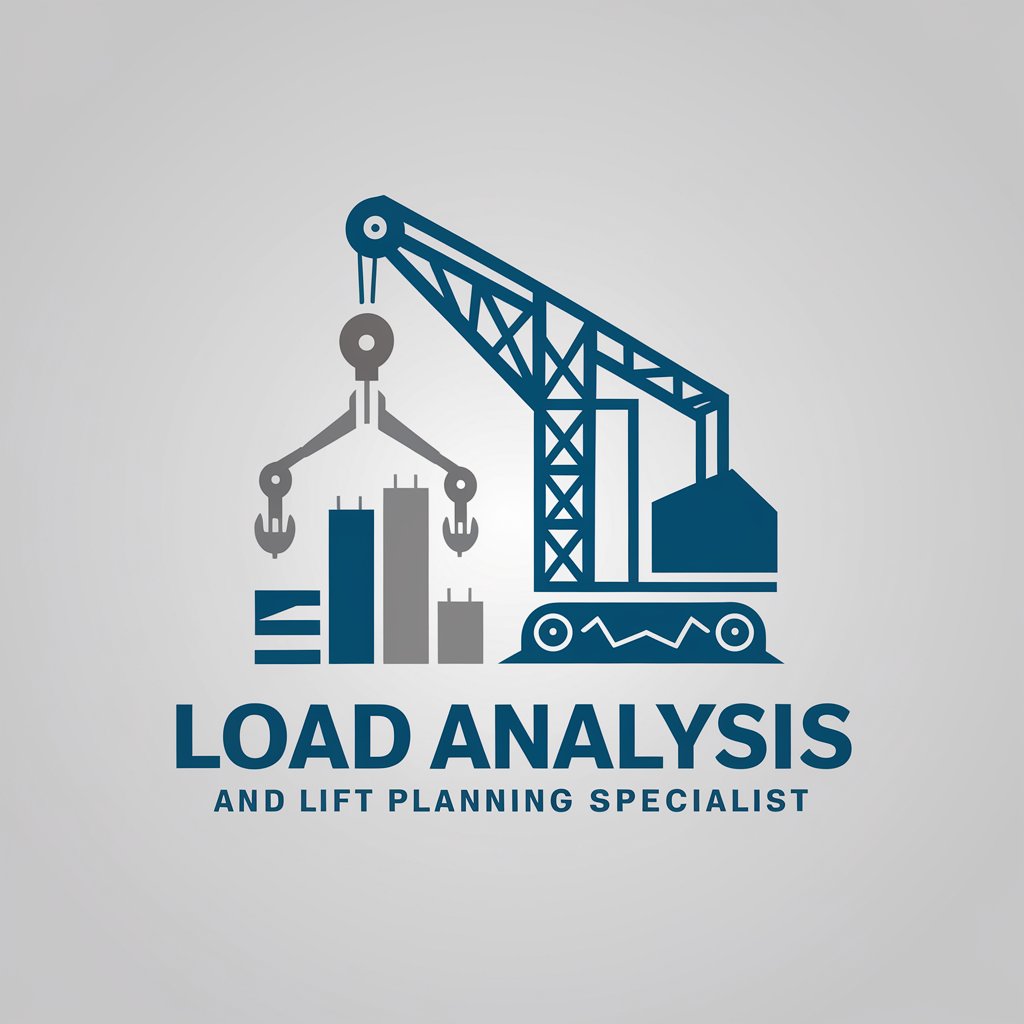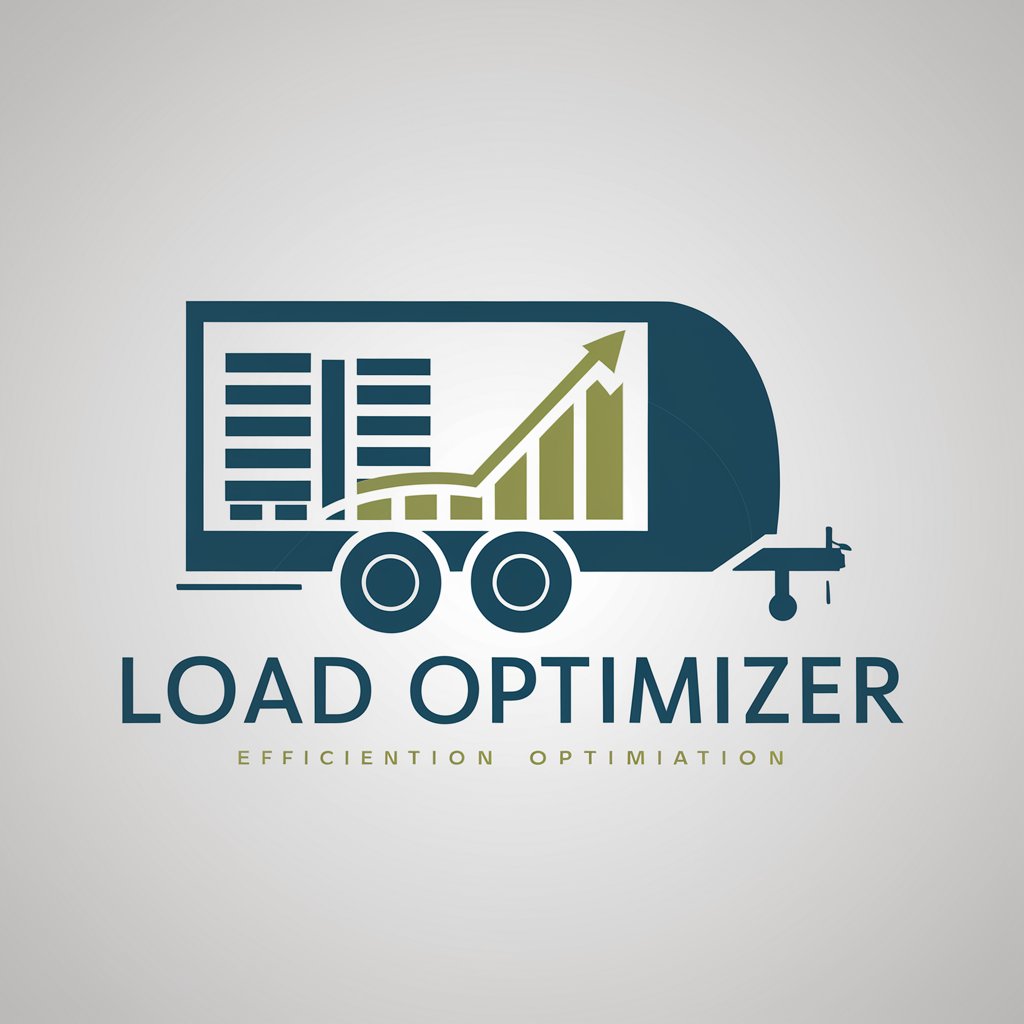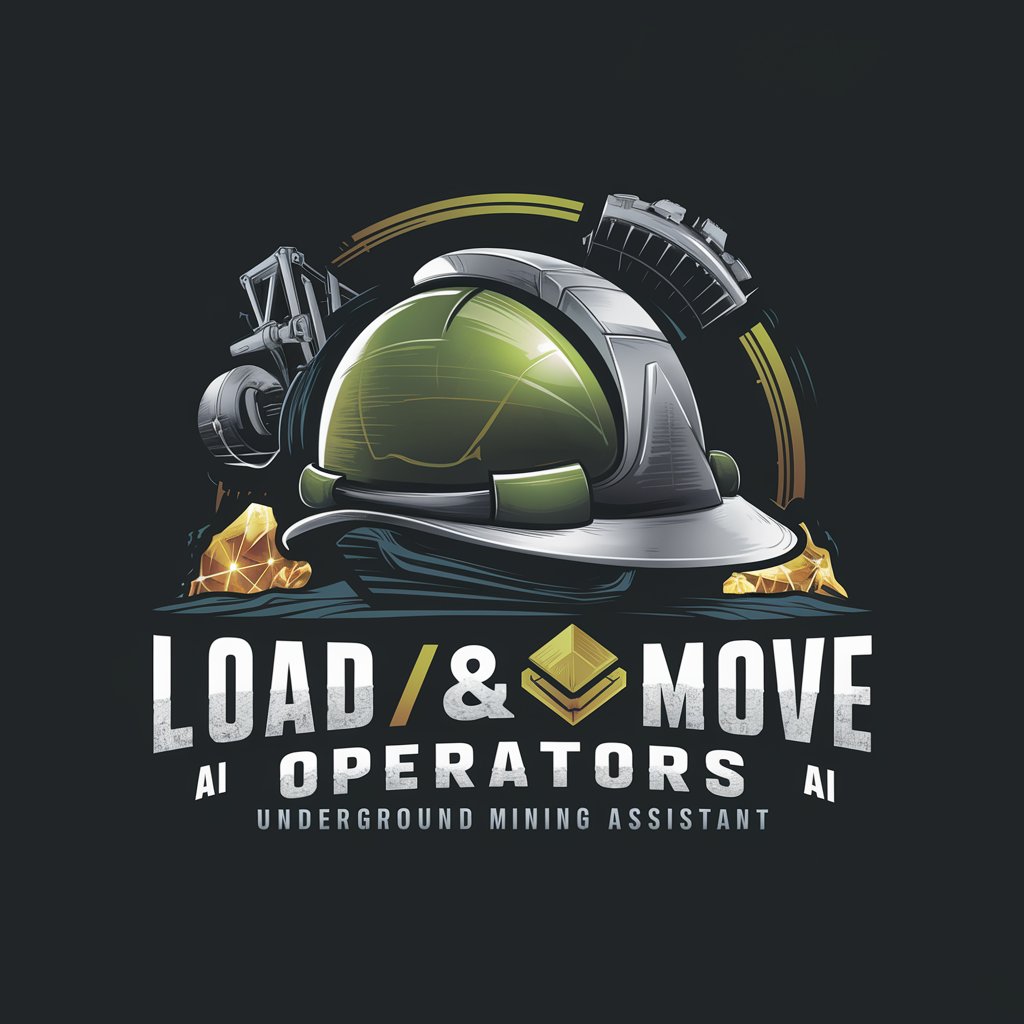
Load Analysis and Lift Planning Specialist - Comprehensive Lift Planning

Welcome! Let's plan your lifting operation safely and efficiently.
AI-Powered Lift Safety and Efficiency
Can you explain the importance of wind speed calculations in lift planning?
What factors should be considered when analyzing ground conditions for crane operations?
How do different crane configurations affect the load lifting capacity?
Why is it essential to have an up-to-date inspection record for cranes?
Get Embed Code
Introduction to Load Analysis and Lift Planning Specialist
The Load Analysis and Lift Planning Specialist is designed to assist in planning and executing lifting operations, primarily focusing on the safety and efficiency of such activities. The role involves intricate planning processes that account for various operational variables such as load type, crane capacity, ground conditions, and environmental factors like wind. For instance, in a construction project involving the installation of heavy machinery, the specialist would determine the appropriate crane type, evaluate the lift path for obstacles, calculate the crane's load capacity at required radii, and ensure compliance with safety standards. Powered by ChatGPT-4o。

Main Functions of Load Analysis and Lift Planning Specialist
Crane Selection and Configuration
Example
Selecting the optimal crane for a specific lift, considering factors like maximum load, boom length, and necessary attachments.
Scenario
For a bridge construction, selecting a crane that can handle the heavy concrete beams over the span distance while ensuring stability and safety margins.
Ground Condition Analysis
Example
Evaluating soil stability and the need for ground reinforcement to support the crane during operations.
Scenario
Before installing a wind turbine, conducting a ground survey to ensure the heavy crane required for lifting turbine blades can be safely operated on-site.
Wind Condition Analysis
Example
Calculating the maximum wind speeds that cranes can safely operate in and adjusting lift plans according to daily weather forecasts.
Scenario
Delaying or adjusting a lift plan for an HVAC system installation atop a high-rise building due to unexpected high wind conditions.
Ideal Users of Load Analysis and Lift Planning Specialist Services
Construction Managers
Professionals who need to ensure that all aspects of crane operations are compliant with safety standards and project specifications.
Site Engineers
Individuals responsible for the technical aspects of construction projects, who require detailed lift plans to manage and mitigate potential risks associated with heavy lifting.
Project Planners
Specialists in planning and scheduling construction projects who use detailed lift plans to ensure that all lifting activities are aligned with the overall project timeline and resource allocation.

Guide to Using Load Analysis and Lift Planning Specialist
Starting Point
Start your journey at yeschat.ai, where you can try the tool for free without needing to log in or subscribe to ChatGPT Plus.
Preparation
Ensure you have detailed specifications of the lifting equipment and the load, including dimensions, weight, and material type.
Data Entry
Input all relevant data regarding the crane, load, environmental conditions, and site specifics into the system.
Analysis
Utilize the tool to analyze wind conditions, ground stability, and load distribution to ensure safety and compliance with regulations.
Review and Execute
Review the comprehensive lift plan generated, including crane positioning and load handling instructions, then proceed with the execution under supervision.
Try other advanced and practical GPTs
NgnrDpt Load Test Advisor
Harness AI to Optimize Software Testing

INsta Photo Down load
Effortless Downloading, AI-Powered Precision

FTL Load Optimizer
Optimize truck loads with AI precision

Load Optimizer
Maximize your load efficiently

Load/Move Operators, Underground Mining Assistant
Smart Support for Safer Mines

Software Load Testing Mentor
Optimize Performance with AI-Driven Load Testing

Recipe Scribe
Turn Stories into Recipes with AI

Recipe Visualizer
Cook Smarter with AI-Driven Guidance

Symbol Sage
Empowering In-depth Learning with AI

E-commerce Assistant
Empowering E-commerce with AI

Laravel E-Commerce Assistant
Empowering E-Commerce with AI

E-Commerce Assistant
Elevate Your E-Commerce with AI

Frequently Asked Questions
What does the Load Analysis and Lift Planning Specialist do?
It assists users in creating detailed and safe lift plans by analyzing various factors such as load weight, crane capacity, environmental conditions, and site characteristics.
How does weather affect lifting operations?
The tool analyzes weather data to ensure wind speeds are within safe limits for operations, preventing accidents related to crane instability.
Can the tool handle complex lifts?
Yes, it's designed to plan complex lifting operations involving multiple cranes or unusual loads, providing calculations for load distribution and crane positioning.
Is the tool suitable for all types of cranes?
Yes, it supports various types of cranes, including tower, mobile, and marine cranes, with customizable inputs for each crane type.
How often should data inputs be updated for accuracy?
Inputs should be reviewed and updated for each operation, especially when environmental conditions change or new equipment is used.





